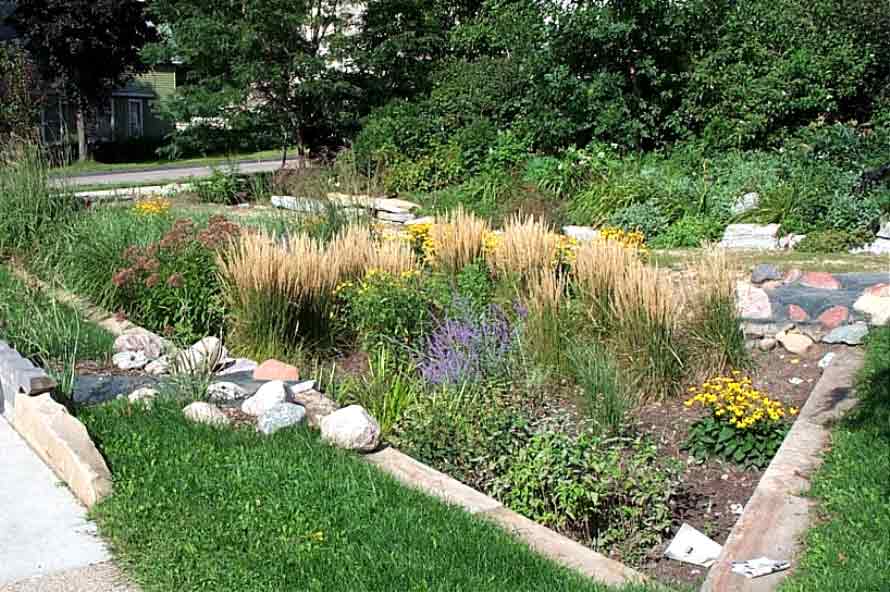what is a rain garden definition
The base of the dip is planted with plants that can withstand waterlogging although a rain garden drains well and will only be waterlogged for periods of up to 48 hours. Dig the garden to the desired depth.

Rain Garden The Vertical Garden That Uses No Power Images Vertical Garden Rain Garden Vertical Garden Wall
Use the extra soil to build a berm on the downhill side.

. A rain garden is a small natural area that helps to cleanse stormwater before it flows into brooks and ponds. Make sure the bottom is level. Definition of Rain Gardens.
A rain garden is a garden planted at a lower level than the land around it. Consider including an overflow outlet for unusually heavy rains. Planning a rain garden is water-wise and ecologically low-impact and it produces a beautiful garden that provides a home to birds butterflies and other insects.
A rain garden is a water drainage system that directs water towards a garden. Put simply a rain garden is a shallow area of ground or dip which receives run-off from roofs and other hard surfaces. A rain garden is a garden of native shrubs perennials and flowers planted in a small depression which is generally formed on a natural slope.
A rain garden is a small area of garden or land that is slightly deeper than its surroundings and that collects rainwater run off from roofs and other hard surfaces. A rain garden is a garden planted in a hole or depression that receives its water from the rain runoff of buildings roadways sidewalks or other nearby impervious structures. In addition the path the water takes through the soil.
The garden part of a rain garden pertains to the planting of native flowering perennials shrubs and grasses that can help filter the runoff water plus make the space an attractive feature of the landscape. The plants and soils in rain gardens remove pollution from the stormwater and keep streams. Rain Garden Network promotes the use of shallow depressions dug to a depth of 5 to 7 because it is easier for the homeowner or school kids to tackle.
Plants in a rain garden are typically wetland edge vegetation selected to to. Roof when multiplied by 7 per-cent would call for a rain garden 140 sqft. Rain gardens are a landscaped area thats used to collect rainwater as it runs off of driveways roofs or even streets.
Refill the depression with soil adding compost or decayed leaves to loosen clay soils. More drought-tolerant plants are used towards the edges. Storm water fills the depression and then drains.
The garden soaks up and purifies water resulting in cleaner water flowing to area rivers streams canals lakes ponds and harbors. Determine a length and width of the rain garden that best fits the site. Rain gardens also conserve water reducing the need for irrigation.
A rain garden is a planted shallow depression in the landscape that collects and soaks up rainwater runoff from paved areas roofs and the surrounding landscapes. Gardens on a slope require more digging to create a flat bottom. Rain gardens may also help to cool urban heat islands.
Not only do you save water when you create a rain garden its placement in the path of runoff water prevents erosion. A rain garden is purposefully situated at a relatively lower spot on a property so it can receive runoff after it rains. It is designed to temporarily hold and soak in rain water runoff that flows from roofs driveways patios or lawns.
It is planted with plants that can stand waterlogging for up to 48 hours at a time. Rain gardens are a beautiful and colorful way for homeowners businesses and municipalities to help ease storm water problems. Garden Depth Atypical rain garden is between four and eight inches deep.
Rain gardens are effective in removing up to 90 of nutrients and chemicals and up to. For example a 2000 sqft. The idea of renting heavy equipment and hiring a professional landscaping crew to prepare you garden tends to that the fun and community out of the project.
Rain gardens also called bioretention areas allow stormwater from impervious surfaces such as streets and driveways to soak into the ground. Ar a i n. There is a growing national trend by municipalities and homeowners to incorporate natural processes such as rain gardens to help relieve flooding.
It is designed to catch rain runoff and function as a natural habitat for native plants and wildlife. By giving rainwater a place to go this kind of garden reduces erosion from rainwater runoff and it significantly reduces or eliminates the need to water the plants. In size or 14long by 10wide.

Front Yard Rain Garden Modern Low Maintenance Dark Rock Soil Portland Rain Garden Rain Garden Modern Garden Drought
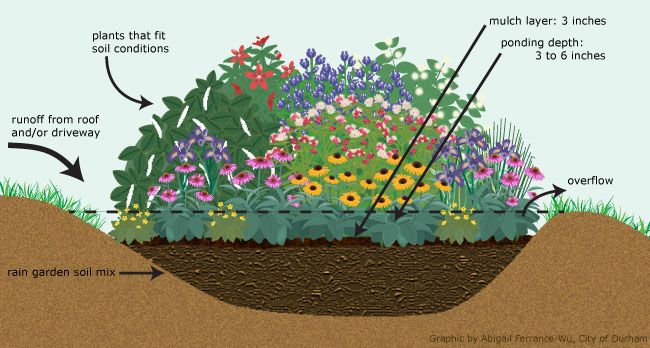
Rain Garden Diagram Rain Garden Design Rain Garden Garden Soil Mix

Rain Gardens Design And Installation Extension

Urban Design Definition Landscape Architecture Design Landscape Design Landscape Architecture
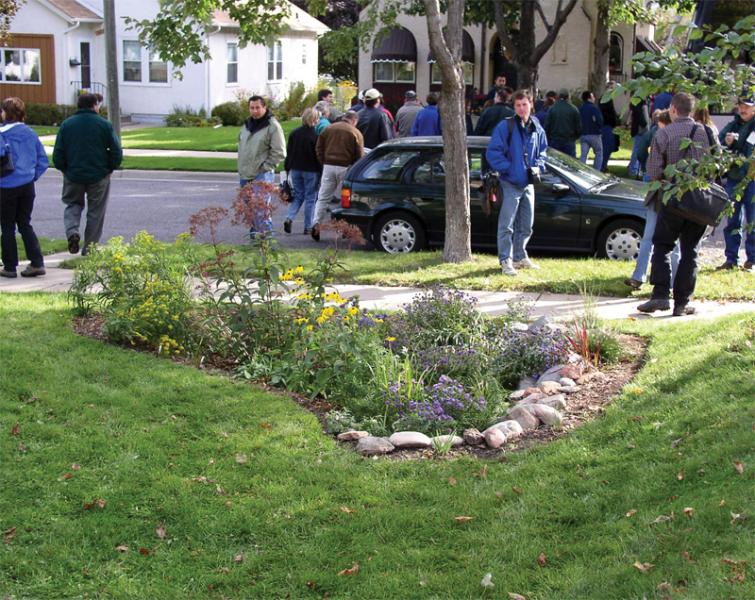
Rain Gardens Design And Installation Extension

Rain Gardens And Bridge Between Rain Garden Rain Garden Design Garden Design

Bioretention Areas Rain Gardens
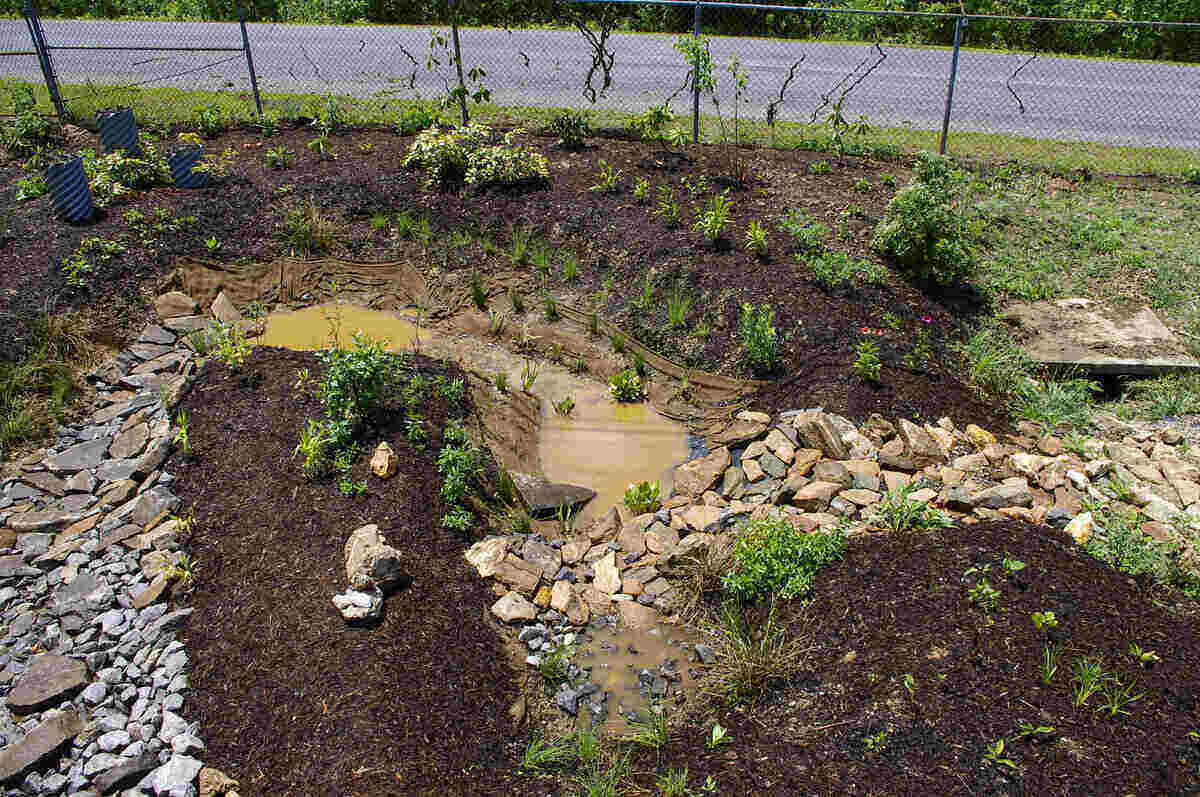
12 Benefits Of A Rain Garden Lawn Care Blog Lawn Love

Gravel Surrounding Water Feature Frog Pond Rain Garden Design Australian Garden Design Australian Garden
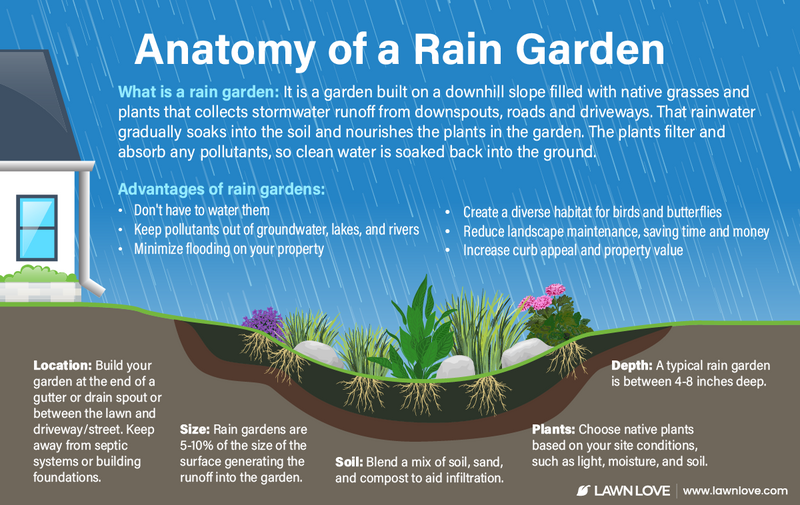
12 Benefits Of A Rain Garden Lawn Care Blog Lawn Love

Midwest Hardscape December 2010 Rain Garden Hardscape Landscaping Retaining Walls

Hampstead Terra Cotta Plant Surround 18 Gardener S Supply In 2021 Garden Supplies Garden Edging Sloped Garden

Alfa Tamfal Rain Garden Hardscape Landscaping Retaining Walls

Residential Rain Garden In Seattle Photo Ashley Blazina 2015 Jardin De Lluvia Jardines Jardineria

Stormwater Management Stormwater Rain Garden
New England Aster Google Search Native Plants Perennial Plants Sustainable Landscaping

